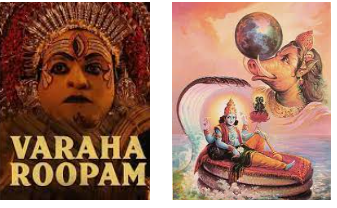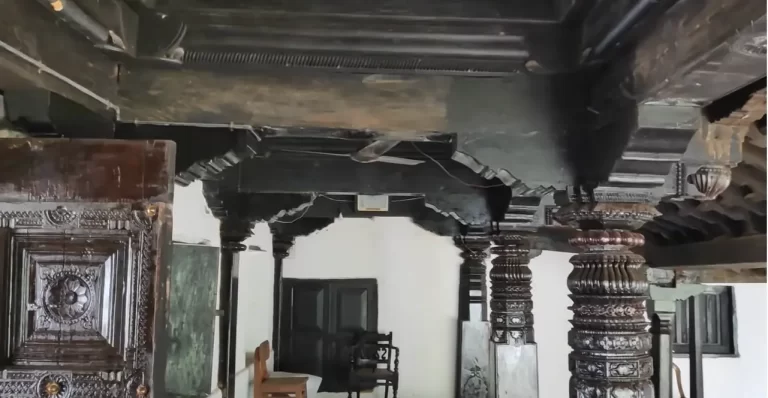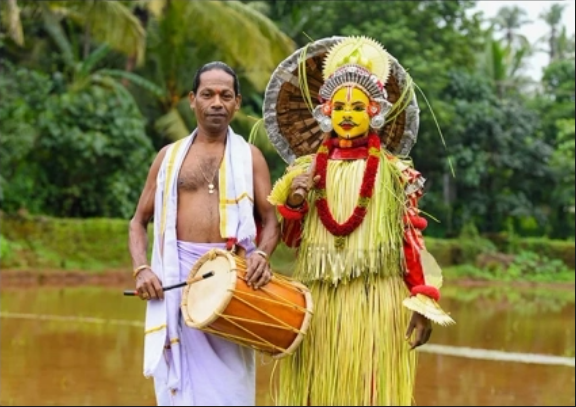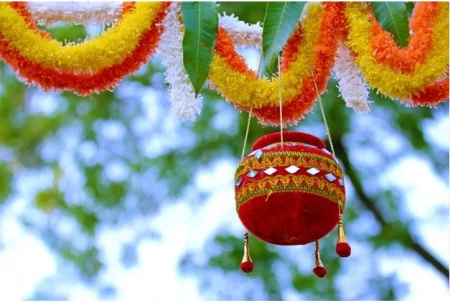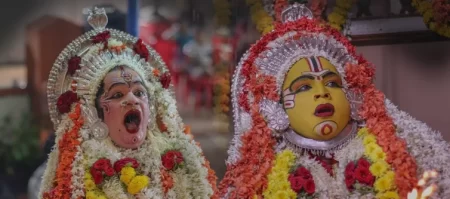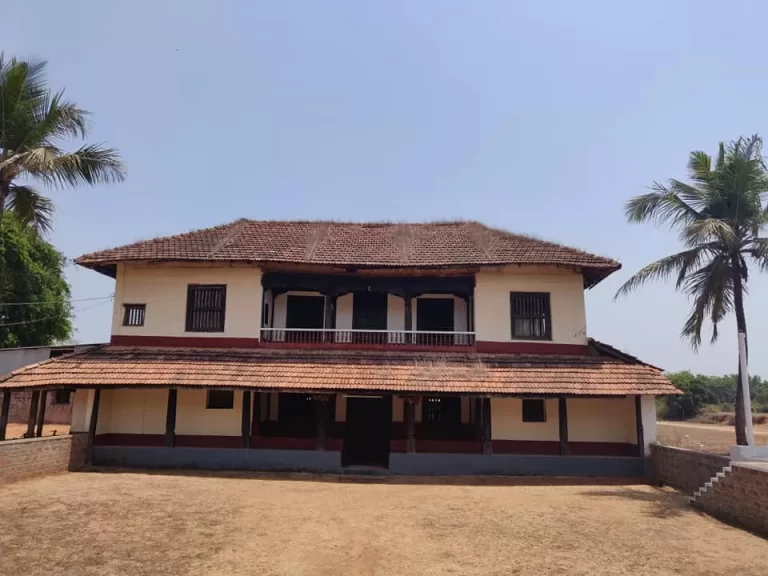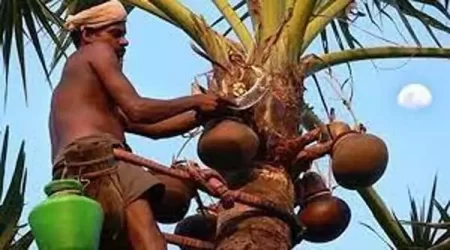Varaha Roopam Daiva Varishtam – Lyrics
Varaha Roopam Lyrics in Kannada
Varaha Roopam Lyrics from Rishabh Shetty’s Kantara Movie
ವರಾಹ ರೂಪಂ ದೈವ ವರಿಷ್ಟಂ
ವರಾಹ ರೂಪಂ ದೈವ ವರಿಷ್ಟಂ
ವರಸ್ಮಿತ ವದನಂ..
ವಜ್ರ ದಂತಧರ ರಕ್ಷಾ ಕವಚಂ
ಶಿವ ಸಂಭೂತ ಭುವಿ ಸಂಜಾತ
ನಂಬಿದವ ಗಿಮ್ಬು ಕೊಡುವವನೀತ
ಸಾವಿರ ದೈವದ ಮನ ಸಂಪ್ರೀತ
ಬೇಡುತ ನಿನ್ದೆವು ಆರಾಧಿಸುತ
Varaha Roopam Lyrics in Tulu Script
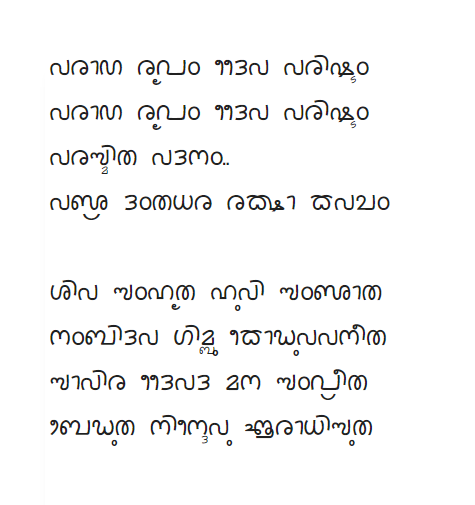
“ವರಾಹ ರೂಪಂ ದೈವ ವರಿಷ್ಟಂ” Lyrics in English
Aa Aa AaAa Aa AaAa
Varaha Roopam Daiva Varishtam
Varaha Roopam… Daiva Varishtam
Varasmitha Vadanam, Mm Mm
Vajra Dantadhara… Rakshaa Kavacham, Hmm
Shiva Sambhootha… Bhuvi Samjaatha
Nambidava Gimbu Koduvavaneetha
Saavira Daivada… Mana Sampreetha
Bedutha Nindevu Aaradhisutha, Aa Aa
PaPa MaGaRiSa PaGaRiSa MaDaRiSa
GaNiSa RiSaSa SaNiSa RiGaMaMa
PaPa MaGaRiSa PaGaRiSa MaDaRiSa
GaNiSa RiSaSa SaNiSa RiGaMaMa
DaaGa MaPaDaNi DaPaDaNi
SaNiDaa NiSaNiDa NiSaNi DaPaDaNi
SaRiDaNi SaRiGaMa SaaRiGaMaPaDaMa
PaDaNiGaMa PaDaNiGaMa Gaa

Lyrics Meaning in English
Varaha Roopam Daiva Varishtam,
Varaha, the third incarnation of Lord. Vishnu, the supreme among all Gods.
Varaha Roopam Daiva Varishtam,
Varaha, the third incarnation of Lord. Vishnu, the supreme among all Gods.
Varasmitha Vadanam
He who assumes the form of a wild boar; the greatest of the demons.
Vajra Dantadhara Raksha Kavacham,
With teeth as hard as diamond, he who protects us like a shield.
Shiva Sambhootha Bhuvi Samjatha,
He who embodies the essence of Shiva; the one who thrives on earth
Nambidava Gimbu Koduvavaneetha,
He who gives refuge to those who believe in him.
Savira Daivada Mana Sampreetha,
The one who has won the hearts of thousands of Gods.
Bedutha Nindevu Aaradhisutha
We now stand in front of you, worshipping you.
View “ವರಾಹ ರೂಪಂ ದೈವ ವರಿಷ್ಟಂ” Song on YouTube
Some Background Story on Varaha Avatar of Lord Vishnu
In Kannada
ಹಿಂದೂ ಪುರಾಣಗಳ ಪ್ರಕಾರ, ಹಿರಣ್ಯಾಕ್ಷ ಎಂಬ ರಾಕ್ಷಸನು ಭೂಮಿಯನ್ನು ಸಮುದ್ರದ ತಳಕ್ಕೆ ಎಳೆದನು. ಅದನ್ನು ರಕ್ಷಿಸಲು ಭಗವಾನ್ ವಿಷ್ಣುವು ವರಾಹ (ವರಾಹ ಅವತಾರ) ರೂಪವನ್ನು ತೆಗೆದುಕೊಂಡನು. ವರಾಹ ಅವತಾರವು ರಾಕ್ಷಸನನ್ನು ಕೊಂದು ತನ್ನ ದಂತಗಳನ್ನು ಬಳಸಿ ಭೂಮಿಯನ್ನು ನೀರಿನಿಂದ ಮೇಲಕ್ಕೆತ್ತಿತು. ವರಾಹ ಅವತಾರವನ್ನು ಪೂರ್ಣ ಪ್ರಾಣಿ ರೂಪದಲ್ಲಿ ಅಥವಾ ಹಂದಿಯ ತಲೆ ಮತ್ತು ಮನುಷ್ಯನ ದೇಹದೊಂದಿಗೆ ಪ್ರತಿನಿಧಿಸಲಾಗುತ್ತದೆ. ಅವನು ಭೂಮಿಯೊಂದಿಗೆ ಬೃಹತ್ ಹಂದಿಯಂತೆ ತೋರಿಸಲ್ಪಟ್ಟಿದ್ದಾನೆ, ಅದು ಅವನ ದಂತಗಳಲ್ಲಿ ಒಂದಕ್ಕೆ ಅಂಟಿಕೊಳ್ಳುತ್ತದೆ. ಅರ್ಧ-ಮಾನವ ಮತ್ತು ಅರ್ಧ-ಪ್ರಾಣಿ ರೂಪದಲ್ಲಿ, ಅವನು ಭೂಮಿ ದೇವಿಯನ್ನು ಬೆಂಬಲಿಸುವ ಒಂದು ಕಾಲನ್ನು ಬಾಗಿಸಿ ನಿಂತಿರುವಂತೆ ಚಿತ್ರಿಸಲಾಗಿದೆ. ವರಾಹ ಅವತಾರದ ದೈವಿಕ ಉದ್ದೇಶವು ಧರ್ಮ ಅಥವಾ ಸದಾಚಾರವನ್ನು ಪುನಃಸ್ಥಾಪಿಸುವುದು ಮತ್ತು ಭೂಗ್ರಹವನ್ನು ರಾಕ್ಷಸರು ಅಥವಾ ಅಸುರರ ಕೈಯಿಂದ ರಕ್ಷಿಸುವುದು. ಭಗವಾನ್ ವಿಷ್ಣುವು ಸತ್ಯಯುಗದಲ್ಲಿ ವರಾಹ ಅವತಾರವನ್ನು ತೆಗೆದುಕೊಂಡರು. ಅವನು ಭೂಮಿಯನ್ನು ರಕ್ಷಿಸಲು (ಪೃಥ್ವಿ) ಹಂದಿಯಾಗಿ ಅವತರಿಸಿದನು.
In English
As per the Hindu mythology, it was the demon named Hiranyaksha who dragged the Earth to the bottom of the sea. It was Lord Vishnu who took the form of a boar (Varaha Avatar) to rescue it. The Varaha Avatar slew the demon and raised the Earth out of the waters using his tusks. Varaha Avatar is represented in full animal form or with the head of a boar and body of the man. He is shown as a colossal boar with the Earth, which clings to one of his tusks. In half-human and half-animal form, he is often portrayed standing with one leg bent supporting Bhumi Devi. The divine purpose of Varaha Avatar was to restore Dharma or righteousness and save the planet earth from the hands of demons or Asuras. Lord Vishnu took Varaha Avatar in the Satya Yug. He incarnated as a Boar for protecting the Earth (Prithvi).
In Tulu
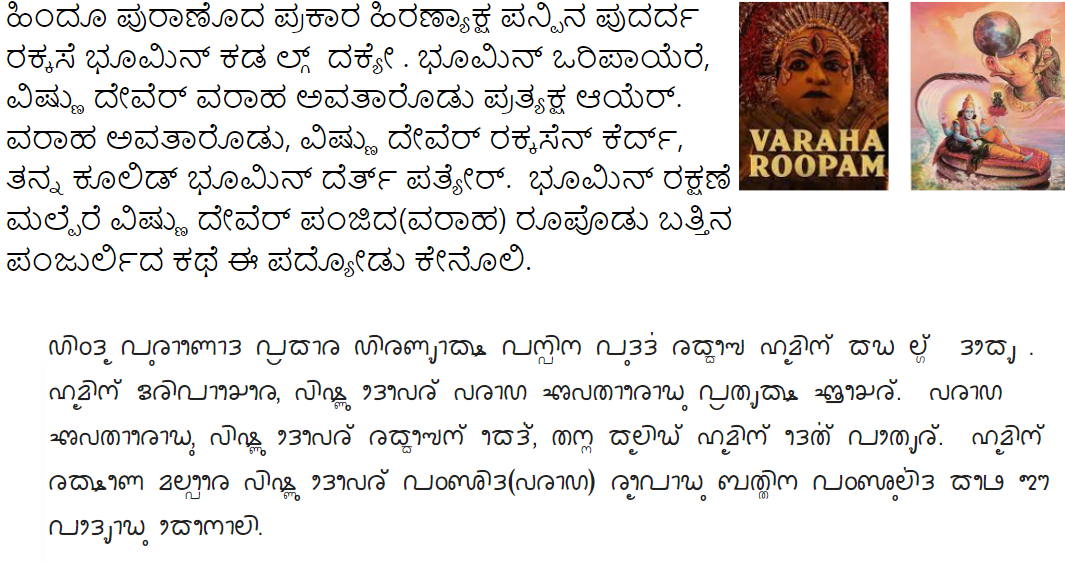
Check the category Tulu Traditions for more
Song Credits
Director: Rishabh Shetty
Producer: Vijay Kiragandur
Singer: Sai Vignesh
Music: B Ajaneesh Loknath
Lyrics: Shashiraj Kavoor
Star Cast: Rishabh Shetty, Saptami Gowda
Music Label Source & Copyrights: Hombale Films
Sources: Wikipedia

